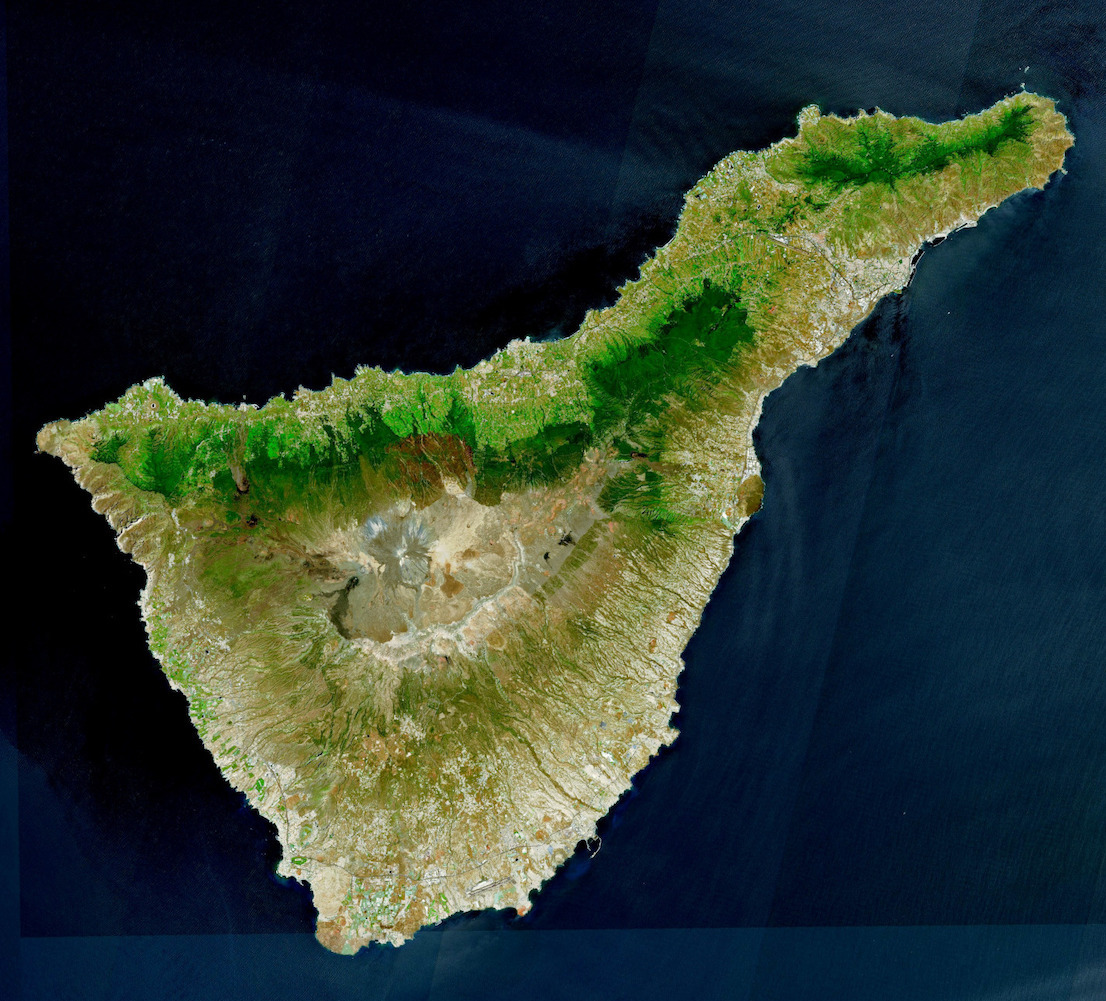|
Guatimac
Guatimac or the Idol of Guatimac is an owl-shaped Guanches, Guanche cult image, found in 1885, hidden in a cave between the municipalities of Fasnia and Güímar (Tenerife, Canary Islands, Spain) wrapped in goat hide. Characteristics The idol, made from Pottery firing, fired clay, is incomplete, with two appendages missing from its head. It bears a hole next to its neck, presumably to pass a strap through and wear it as an amulet. This type of cult image was used by the aboriginal priestly castes of the Kankus, who were responsible with the worship of ancestor spirits, and the Guañameñes, the high priests. Along with Guatimac, numerous Guanche mummies were found at the cave in the midst of the 19th century. Despite its small size, only about 6.4 centimeters in height, it is a figure of great anthropological value, since it is one of the few idols of prehistorical Tenerife that survived to the modern day. Today, the figurine can be seen at the Archaeological Museum of Puerto de ... [...More Info...] [...Related Items...] OR: [Wikipedia] [Google] [Baidu] |
Guanches
The Guanche were the Indigenous peoples, indigenous inhabitants of the Spain, Spanish Canary Islands, located in the Atlantic Ocean some to the west of modern Morocco and the North African coast. The islanders spoke the Guanche language, which is believed to have been related to the Berber languages of mainland North Africa; the language became extinct in the 17th century, soon after the islands were colonized. It is believed that the Guanche may have arrived at the archipelago some time in the 1st millennium BC, first millennium BC. The Guanche were the only indigenous people known to have lived in the Macaronesian archipelago region before the arrival of Europeans. There is no accepted evidence that the other Macaronesian archipelagos (the Cape Verde Islands, Madeira and the Azores) were inhabited. After the commencement of the Conquest of the Canary Islands, Spanish conquest of the Canaries, starting in the early 15th century, many natives were outright killed by the Spanish ... [...More Info...] [...Related Items...] OR: [Wikipedia] [Google] [Baidu] |
Archaeological Museum Of Puerto De La Cruz
The Archaeological Museum of Puerto de la Cruz () is a small archaeological museum located in the town of Puerto de la Cruz (Tenerife, Canary Islands, Spain). One of the most important local museums, it offers an archival collection comprising more than 2,600 specimens of the aboriginal Guanche culture, and a document collection named after researcher Luis Diego Cuscoy. The Puerto de la Cruz museum has an enormous collection of aboriginal Guanche ceramics, including the remains of several ancient Guanche mummies. It contains several unique pieces native to the island, such as two limpet
[...More Info...] [...Related Items...] OR: [Wikipedia] [Google] [Baidu] |
Cult Image
In the practice of religion, a cult image is a Cultural artifact, human-made object that is venerated or worshipped for the deity, Spirit (supernatural entity), spirit or Daimon, daemon that it embodies or represents. In several traditions, including the ancient religions of Ancient Egypt, Egypt, Ancient Greece, Greece and Rome, and Hinduism, cult images in a temple may undergo a daily routine of being washed, dressed, and having food left for them. Processions outside the temple on special feast days are often a feature. Religious images cover a wider range of all types of images made with a religious purpose, subject, or connection. In many contexts "cult image" specifically means the most important image in a temple, kept in an inner space, as opposed to what may be many other images decorating the temple. The term idol is an image or representation of a god used as an object of worship, while idolatry is the worship of an "idol" as though it were God. Ancient Near East and E ... [...More Info...] [...Related Items...] OR: [Wikipedia] [Google] [Baidu] |
Tenerife
Tenerife ( ; ; formerly spelled ''Teneriffe'') is the largest and most populous island of the Canary Islands, an Autonomous communities of Spain, autonomous community of Spain. With a land area of and a population of 965,575 inhabitants as of April 2025, it is the most populous island in Spain and the entire Macaronesia region. Tenerife is also home to 42.7% of the total population of the archipelago. More than seven million tourists (7,384,707 in 2024) visit Tenerife each year, making it by far the most visited island in the archipelago. It is one of the most important tourist destinations in Spain and the world, hosting one of the world's largest carnivals, the Carnival of Santa Cruz de Tenerife. The capital of the island, , is also the seat of the island council (). That city and are the co-capitals of the Autonomous communities of Spain, autonomous community of the Canary Islands. The two cities are both home to governmental institutions, such as the offices of the preside ... [...More Info...] [...Related Items...] OR: [Wikipedia] [Google] [Baidu] |
Guañameñe
Guañameñe or Guadameñe was the name of a Guanche fortune-teller who had prophesied the arrival of the Castilian conquerors to the island of Tenerife (Canary Islands, Spain) at the end of the fifteenth century. Subsequently, the word ''Guañameñe'' was extended to denominate the highest priestly rank of the Guanche society. History The story about the fortune-teller Guañameñe is mainly due to the friar Alonso de Espinosa, who in his work ''Historia de Nuestra Señora de Candelaria'' mentions that the Guanches had been warned by the fortuneteller that some white people were to come inside large birds by the sea. According to the Dominican, Guañameñe would have prophesied these facts a century before the arrival of the Castilians in 1494, and was the reason that the mencey of Taoro ordered the rest of Guanche kings to notify him if any foreigner arrived on the shores of the Island, something that the one of Güímar did when appearing on its beaches the image of the Virg ... [...More Info...] [...Related Items...] OR: [Wikipedia] [Google] [Baidu] |
El Guatimac
EL, El or el may refer to: Arts and entertainment Fictional entities * El, a character from the manga series ''Shugo Chara!'' by Peach-Pit * Eleven (''Stranger Things'') (El), a fictional character in the TV series ''Stranger Things'' * El, family name of Kal-El (Superman) and his father Jor-El in the Superman dynasty * E.L. Faldt, character in the road comedy film ''Road Trip'' Music * Él Records, an independent record label from the UK founded by Mike Alway * ''Él ''(Lucerito album), a 1982 album by Lucerito * "Él", Spanish song by Rubén Blades from the album '' Caminando'' * "Él" (Lucía song), the Spanish entry performed by Lucía in the Eurovision Song Contest 1982 Other media * ''Él'', 1926 autobiographical novel by Mercedes Pinto * ''Él'' (film), a 1953 film by Luis Buñuel based on the 1926 novel * ''Él'' (visual novel), a 1991 Japanese adult visual novel * EL TV, an Azerbaijani regional television channel Companies and organizations * Estée Lauder Compa ... [...More Info...] [...Related Items...] OR: [Wikipedia] [Google] [Baidu] |
Cranial Vault
The cranial vault is the space in the skull within the neurocranium, occupied by the brain. Development In humans, the cranial vault is imperfectly composed in newborns, to allow the large human head to pass through the birth canal. During birth, the various bones, connected only by cartilage and ligaments, will move relatively to each other. The open portion between the major bones of the upper part of the vault, called fontanelles, normally remain soft up to two years after birth. As the fontanelles close, the vault loses some of its plasticity. The sutures between the bones remain until 30 to 40 years of age, allowing for growth of the brain. Cranial vault size is directly proportional to skull size and is developed early."Changes in vault dimensions must occur by early childhood because of the early development of the vault.Secular change in craniofacial morphology"During the 125 years under consideration, cranial vaults have become markedly higher and somewhat narrower, ... [...More Info...] [...Related Items...] OR: [Wikipedia] [Google] [Baidu] |
Owls In Art
Owls are birds from the order Strigiformes (), which includes over 200 species of mostly solitary and nocturnal birds of prey typified by an upright stance, a large, broad head, binocular vision, binaural hearing, sharp talons, and feathers adapted for silent flight. Exceptions include the diurnal northern hawk-owl and the gregarious burrowing owl. Owls are divided into two families: the true (or typical) owl family, Strigidae, and the barn owl and bay owl family, Tytonidae. Owls hunt mostly small mammals, insects, and other birds, although a few species specialize in hunting fish. They are found in all regions of the Earth except the polar ice caps and some remote islands. A group of owls is called a "parliament". Anatomy Owls possess large, forward-facing eyes and ear-holes, a hawk-like beak, a flat face, and usually a conspicuous circle of feathers, a facial disc, around each eye. The feathers making up this disc can be adjusted to sharply focus sounds from varying di ... [...More Info...] [...Related Items...] OR: [Wikipedia] [Google] [Baidu] |
Cult Images
Cults are social groups which have unusual, and often extreme, religious, spiritual, or philosophical beliefs and rituals. Extreme devotion to a particular person, object, or goal is another characteristic often ascribed to cults. The term has different, and sometimes divergent or pejorative, definitions both in popular culture and academia and has been an ongoing source of contention among scholars across several fields of study. Beginning in the 1930s, new religious movements became an object of sociological study within the context of the study of religious behavior. Since the 1940s, the Christian countercult movement has opposed some sects and new religious movements, labeling them cults because of their unorthodox beliefs. Since the 1970s, the secular anti-cult movement has opposed certain groups, which they call cults, accusing them of practicing brainwashing. Groups labelled cults are found around the world and range in size from small localized groups to some intern ... [...More Info...] [...Related Items...] OR: [Wikipedia] [Google] [Baidu] |
1885 Archaeological Discoveries
Events January * January 3– 4 – Sino-French War – Battle of Núi Bop: French troops under General Oscar de Négrier defeat a numerically superior Qing Chinese force, in northern Vietnam. * January 17 – Mahdist War in Sudan – Battle of Abu Klea: British troops defeat Mahdist forces. * January 20 – American inventor LaMarcus Adna Thompson patents a roller coaster. * January 24 – Irish rebels damage Westminster Hall and the Tower of London with dynamite. * January 26 – Mahdist War in Sudan: Troops loyal to Mahdi Muhammad Ahmad conquer Khartoum; British commander Charles George Gordon is killed. February * February 5 – King Leopold II of Belgium establishes the Congo Free State, as a personal possession. * February 9 – The first Japanese arrive in Hawaii. * February 16 – Charles Dow publishes the first edition of the Dow Jones Industrial Average. The index stands at a level of 62.76, and represents the dolla ... [...More Info...] [...Related Items...] OR: [Wikipedia] [Google] [Baidu] |
Archaeology Of Tenerife
Archaeology or archeology is the study of human activity through the recovery and analysis of material culture. The archaeological record consists of Artifact (archaeology), artifacts, architecture, biofact (archaeology), biofacts or ecofacts, archaeological site, sites, and cultural landscapes. Archaeology can be considered both a social science and a branch of the humanities. It is usually considered an independent academic discipline, but may also be classified as part of anthropology (in North America – the four-field approach), history or geography. The discipline involves Survey (archaeology), surveying, Archaeological excavation, excavation, and eventually Post excavation, analysis of data collected, to learn more about the past. In broad scope, archaeology relies on cross-disciplinary research. Archaeologists study human prehistory and history, from the development of the first stone tools at Lomekwi in East Africa 3.3 million years ago up until recent decades. A ... [...More Info...] [...Related Items...] OR: [Wikipedia] [Google] [Baidu] |






